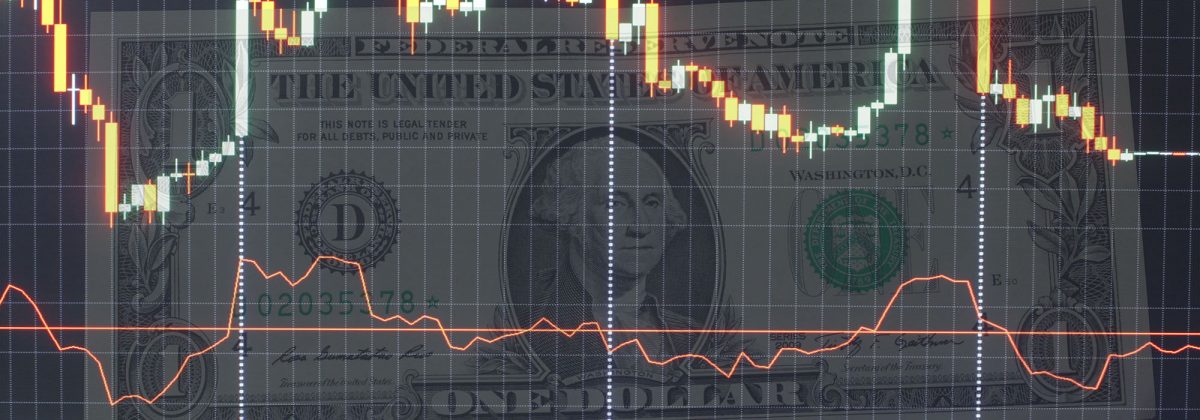What is Triggering Fears of US Economic Recession in the Coming Months?

The US economy is poised to see record growth and, yet, there have been fears of an impending recession. Many economists are of the view that a US recession may arrive sooner than expected and speculations that it would happen by the latter half of 2019 are rife among experts and analysts.
One recent and historically accurate economic indicator has raised fears of an upcoming US recession.
US Bond Yield Curve Inversion
In March 2019, the United States 10-year bond yield fell below the 3-month bond yield. This is called a yield curve inversion and is a prime indicator of a recession. When long-term bonds offer lower returns than short-term bonds, it suggests economic uncertainty.
In 2007, a similar yield inversion occurred, followed by the recession of 2008. So, the March 2019 inversion naturally became a cause of concern for many.
The yield curve has accurately predicted upcoming recessions in the past. Before the recessions of 1981, 1991 and 2001, the yield curve experienced an inversion each time.
What Analysts and Economists Say
Many analysts and economists have interpreted the yield curve inversion as an ominous sign for the US economy that has just been through its best year since the start of recovery in mid-2009.
Peter Boockvar, Chief Investment Officer at Bleakley Advisory Group, was quoted by CNBC as saying, “Yield curves are responding to what they see, to what I believe is a global economic slowdown. You don’t see this kind of move in curves, not just here but everywhere, unless you get one.”
The New York Federal Research, which is considered by many to be important for understanding the spread between yields, has found that the most crucial relationship was between the 10-year and 3-month notes. Also, many market participants analysed the spread between the 10- and 2-year notes, which was about 10 basis points on March 22, 2019.
The Federal Open Market Committee, the body that sets the monetary policy for the US Federal Reserve, has said that it does not plan to raise interest rates any time soon, possibly for the entire duration of 2019, except if there are changes in economic conditions.
The Chairman of the Federal Reserve, Jerome Powell, has asserted that the US economy is still strong. But this statement has faced a strong challenge from the recent yield curve inversion in the bond market. Powell and his colleagues have reduced expectations for domestic GDP growth to 2.1% for 2019 and 1.9% for 2020.
However, there also are experts, proficient in determining the predictive power of the bond yield curves, who hold a different view. They suggest that one single day of a yield curve inversion does not confirm that the economy will go into recession.
Among them, Campbell Harvey, professor of Finance at Duke University and the first to display the predictive ability of the yield curve in the mid-1980s, seems to concur. He stresses that the inversion in the curve must stay for an average duration of three months before it can be said to give a clear signal of an upcoming recession. If this does occur, the history of the US economy shows that there could be an imminent recession within the next nine to 18 months.
But Professor Harvey also emphasises that although the yield curve has a good track record in predicting recessions, there is no certainty when it comes to economic forecasting. “A model is just a model. It’s not an oracle. It helps us forecast the future, but it might at any point fail,” he told The New York Times.
What is the Reality Behind the Panic?
Speculations regarding an impending recession have risen due to a combination of factors that make such a scenario more likely, but not in the immediate future. At the start of 2019, Jerome Powell had said that he did not think that a recession would occur in 2019, but he expressed concerns over global economic growth in Europe and China.
Another factor that is being seen as a potential risk is President Trump’s trade war with China. The Federal Reserve could become aggressive due to this and increase its interest rates, which could damage the US economy. But this is probably not a big enough factor to push the economy into recession territory.
Late 2018 saw a decline in the stock markets, leading to fears of a recession. Due to this, internet searches related to “recession” rose to a level higher than that in the last five years, according to data provided by Google News Lab. So, the stock markets could also indicate an upcoming recession but that isn’t always true.
Currently, the US economy seems to be in a reasonably good position. While a recession might occur in the future, there aren’t strong enough signs that suggest it would occur in the next few months.
Another thing to keep in mind is that widespread chatter about recession can increase the chances of its occurrence. It is, therefore, a kind of self-fulfilling prophecy. If everyone starts to worry about an economic crisis and starts saving their money, rather than spending, and businesses stop investing, recession will become a reality sooner than expected.
The effects of the last recession and several other types of related anxieties still loom large in the minds of the people. They still feel they are under the shadow of the Great Recession and need to tread lightly. Thorough research and keeping an eye on the markets will help give an informed decision about how things are progressing.
Reference Links
- https://www.nytimes.com/2019/03/22/business/yield-curve-inverted-recession.html
- https://www.cnbc.com/2019/03/21/a-key-recession-indicator-just-did-something-that-hasnt-happened-in-12-years.html
- https://www.vox.com/policy-and-politics/2019/3/27/18250823/recession-prepare-when-inverted-yield-curve
- https://www.forbes.com/sites/raulelizalde/2018/12/17/another-warning-that-a-2019-recession-is-coming/#6fcb3318d8f3
- https://www.businesstoday.in/markets/stocks/us-recession-concerns-federal-reserve-policy-germany-eurozone/story/330836.html




